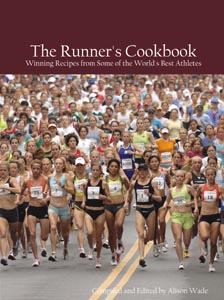| |
|
|
|
|
STEEPLECHASE RULES |
Rulebooks of four different organizations may be consulted by USA athletes, coaches, and officials,
IAAF - governing body for world athletics
USATF - governing body for USA athletics
NCAA - governing competition between colleges and universities
NFSHSA - governing competition between secondary schools.
In other nations a likely hierarchy would be IAAF rules, then those of the nation's governing body, and possibly rules for conduct of school events.
Steeplechase competitors must follow general rules for running that apply to athletes in flat races longer than 800 meters such as not obstructing or impeding the progress of other competitors. Here we describe some rules that are unique to steepling; they are similar, though not identical, in each of the rulebooks cited above.
Steepling was offered as early as 1994 to some U.S. high school girls. By 1999 the National Federation of State High School Associations (NFSHSA) included steepling, in its Rulebook Section 8.2, as an event that may be officially included in a school meet. But further information about the event must be found in the other rulebooks.
Steeple rules specify event distances, dimensions and weight for steeplechase hurdles as well as their placement at the stadium facility, the specifications for water jump pit barrier, and methods for clearing steeple obstacles. Most event-specific information for steepling is located in Rule 169 of the IAAF and USATF rulebooks. Similar information appears in NCAA Rules 1-3, 2-3, 5-5, and 5-7.
Race Distances
The USATF (formerly TAC) rulebook has, since at least 1984, described three steeplechase distances now contested in many nations: 1500 meters, 2000 meters, and 3000 meters. IAAF includes the 2000m and 3000m. NCAA includes only 3000m although colleges host both 1500m and 2000m races. (Historically there have been steeple races as long as 4000 meters and currently as short as 1000 meters; neither has been offered frequently.)
Barriers / Hurdles See also http://www.steeplechics.com/facequip.php?drawing=1
Steeplers encounter two types of vertical obstacle -- movable hurdles on the track and a fixed barrier at a water jump pit. For women, the height of both types is 76.2cm (30 inches). The rules tolerate a variance (3 cm above or below that 76.2cm) that is useful for persons constructing hurdles.
It is now common at meet sites to find adjustable-height steeple hurdles and water jump barrier; they can be set at the women's height or raised to 91.4cm (36 inches) for male steeplers.
If struck by a runner, the "movable" on-track hurdles do not tip over because their specified weight is from 80 to 100 kilograms (176 to 220 pounds) and their base is shaped like an upside-down letter "T" instead of the "L" shape for hurdles used in short races.
IAAF and USATF rules call for on-track steeple hurdles to be 3.96m (13 feet) wide; the NCAA specifies 3.66m (12 feet). All rules recommend that the first hurdle encountered by athletes in a race should be wider -- at least 5 meters (16 feet 5 inches) wide.
Water Jump See also http://www.steeplechics.com/facequip.php?drawing=2
The water obstacle combines a fixed barrier, similar to the on-track hurdles, followed immediately by a water pit that is 3.66m (12 feet) in both width and length. The pit length measurement includes the barrier top thickness of 12.7cm (5 inches).
The base or floor of modern water jumps is sloped upward from a point 30cm (11.8 inches) in front of the barrier where the water depth is 70cm (27.5 inches) toward the pit's departure end where the water should be within 2cm of the track or pathway running surface.
All of the rulebooks mention the need for the water jump slope to include a surface, such as "matting" or shock-absorbent materials, to assure a safe landing for the runners.
NCAA rule 1-3.7 says that "A suitable material between the vertical uprights of the water-jump hurdle is recommended to aid the athlete with depth perception." That recommendation is fulfilled at some venues by opaque material, usually wood or metal.
[Note: Neither IAAF nor USATF rules make a similar recommendation. Depth is "the perpendicular measurement downward from a surface" and its perception is not aided by material between the uprights. Such material obscures the vision of runners approaching the water pit where a fallen runner may be floundering.]
Placement See also http://www.steeplechics.com/facequip.php?drawing=3
Steeplers will encounter four on-track hurdles, and one water jump with a barrier, during each complete lap of the stadium track. But from the start there is usually about a half lap of running on the track with no obstacles; this is to provide runners some time to get unpacked and thereby not all arrive together at the first hurdle.
Both IAAF and NCAA rules state that the distance from the starting point to the finish line on the first lap shall not include any jumps. That sentence supports an unhindered half-lap of a 2000m or 3000m steeple. [The sentence is not relevant to 1500m steeple; its start location provides an unhindered half lap far back from the finish line. USATF rules, recognizing 1500m steeple, do not include the sentence but could -- though only for 2000 and 3000m steeple.]
Hurdles are then placed in that half lap where runners will encounter them on the second and later laps. When all obstacles are in place there will about one-fifth of a "steeple lap" between them.
The water jump is not positioned on the basic 400m running track. Instead, it is on a special pathway either just inside the track's inner lane or just outside the track's outer lane. An inner path is most common; its placement will create a shorter "steeple lap" of about 390 to 395 meters. An outer path, less frequently observed, can create a longer "steeple lap" of 420 meters or more. So the distance of that fifth of a lap between obstacles will vary in proportion to the "steeple lap" length.
The NCAA rulebook recommends that the water jump be placed inside the track. The placement of water jump, as can be seen in TV of major European meets, is usually inside the curb just past the midpoint of the track's second turn -- closer to the start of final straightaway than to the backstretch. Water jump placement elsewhere can lead to undesirable locations for the four on-track hurdles.
IAAF Rule 161 specifies marking the steeplers pathway toward the water jump with flags or plastic cones, a procedure that is also desirable for competition governed by other rulebooks.
Years ago the IAAF rules included a table of steeple course measurements based on a 390-meter "steeple lap." That table is no longer in the IAAF rules but it does appear now in NCAA Rule 1-3.4.
Obstacle Clearance
Steeplers have a requirement common to short hurdle races: they must clear the top of each vertical obstacle (on-track hurdles and water jump barrier) and not trail a foot or leg "below the horizontal plane" of those obstacles. Runners must also "go over or through the water." Failure of clearance requirements can result in disqualification. Runners can clear obstacles by hurdling, placing a foot atop the obstacle, or vaulting with the use of hands.
Note
The rules essay above does not replace official rulebooks. Affected athletes and coaches should be familiar with the wording in applicable rulebook(s). Specifications for dimensions and placement of equipment are the responsibility of meet managers and officials, rather than athletes or coaches, but all should be alert to errors.
-- by James Fields, Editor of Women's Steeplechase Report
|
|
Home | About Us
|
| |

Steeple Chics Store:
Get cool stuff, promote the steeplechase |


The Runner's Cookbook

Proceeds go to the Ryan Shay Memorial Fund & Jenny Crain "Make it Happen" Fund |
Donate to the
Jenny Crain
Make It Happen Fund

http://www.jennycrain.net |
Website Design & Creation:
 |
|



